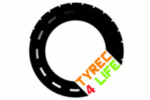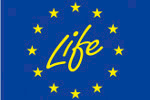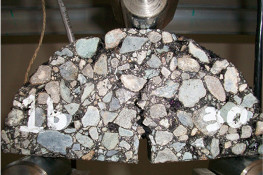The project aims at developing and implementing innovative technologies to expand the use of the discarded tire dust in road paving, focussing mainly on those solutions that provide an optimal balance in meeting technical, economic and environmental requirements.
For the Provincial Administration, the topic of bitumen modified with rubber dust is not new: since 2008 a complex and well-structured research has been launched, commissioned by the Polytechnic University of Turin, which resulted last Autumn in the paving of about 1,600 meters of the ring-road Borgaro-Venaria with bituminous mixture improved by discarded tire dust additives.
The research is part of a broader program aiming at promoting the modified bitumen also with regard to the purchasing of green areas by public bodies launched with the collaboration of:
- FISE-UNIRE - trade association of companies that carry out waste recovery and recycling activities
- ECOPNEUS scpa - a consortium made up of the leading manufacturers and importers of tires
- SITEB - trade association of major players in the road and bitumen sector
- ANFIA - National Association of the Automotive Industry
The Tyrec4life project has a duration of 36 months and a total cost of approximately € 3.5 million co-funded by about 1 million and 200,000 Euro from the European Community.
Expected results of the project:
SPECIFIC GOALS AND ACTIONS OF THE PROJECT
The project is aimed at the development and implementation of innovative technologies capable of extending the use of powder from end-of-life tires (ELTs) in road pavements, through solutions that meet technical, economic and environmental requirements.
Four specific objectives have been defined:
- Validation of open-graded, controlled texture bituminous mixtures. Using gap-graded mixtures as a reference for comparison, the project takes into account other types of bituminous mixtures containing ELTs powder that can offer good technical solutions for the construction and maintenance of pavements in a wide range of cases. Researches are carried out on open-graded materials and on recently conceived mixtures, where the surface texture is properly controlled to improve functional performance while ensuring satisfactory structural durability. In spring 2014, reduced-scale tests will be carried out with the mixtures currently under validation in plants and on about 3.5 km of roads. A rigorous monitoring plan will be applied to each paving.
- Assessment of the potential use of lower-quality or recycled aggregates. The project explores the possibility of using aggregates of different types and origin (including recycled materials) for gap-graded mixtures. This is essential for overcoming the limitations due to the local availability of higher-quality aggregates as well as for reducing construction and maintenance costs.
- Developing solutions for reducing energy consumption and emissions. The project considers the use of special viscosity-reduction additives (paraffin, zeolites, etc.) for lowering mixing temperatures, in order to reduce energy consumption and emissions, but also for being able to perform more efficient maintenance and construction operations even under demanding environmental conditions.
- Preliminary implementation of dry technology. The project includes a series of experimental activities for implementing the so-called "dry" technology, by means of which ELTs powder or granulate is used in bituminous mixtures partially in place of fine aggregates, thus enabling a greater use of rubber as compared to the "wet" technology. In spring 2014, a full-scale mixing prototype will be provided, as well as test pavings in plant.
In order to achieve these goals, surveys are conducted both in laboratory and in full-scale, adopting a multi-disciplinary approach which, inter alia, is also leading to the development of an innovative Life Cycle and Risk Assessment Method for evaluating the impact of different technologies on workers, users and the environment.
For further details on the actions visit the specific webpage.
Partners:
Co-financier:










